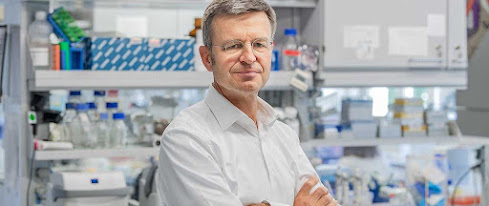 |
| Sabellidae, or feather duster worms, are a family of marine polychaete tube worms |
Researchers at the NYU Tandon School of Engineering discovered that this natural ecosystem involving feather duster worms (Sabellidae, Annelida) and both heat-generating and heat-absorbing bacteria (Archaea) that consume methane enclathrated — or locked into a crystalline structure — by hydrates in deep marine environments play a key role in maintaining equilibrium that keeps hydrates frozen.
Seeking to examine the influence that subtle temperature fluctuations may have on the dynamic stability of the hydrate deposits, the investigators, led by Ryan Hartman, professor of chemical and biomolecular engineering at NYU Tandon, found that feather duster worms, which thrive around crystalline hydrates, by selectively consuming heat-generating bacteria called methanotrophs that metabolize methane, put the brakes on the potential melting of these crystal structures (releasing trapped methane) due to the microbes’ exothermic metabolism.
In a newly published study, “Microbe-Worm Symbiosis Stabilizes Methane Hydrates in Deep Marine Environments,” in Energy & Fuels, researchers including lead author Tianyi Hua, Maisha Ahmad, and Tenzin Choezin, simulated the ecosystem by solving the associated energy balance and methane hydrate dissociation kinetics. They examined and analyzed the dissociation rate — the rate at which frozen hydrates disassembled into molecular components — and found that the symbiosis established among methanogens (methane-producing bacteria), methanotrophs, and feather duster worms indeed stabilizes methane hydrates at depths where the crystals are exposed to the ocean and its living organisms.















.jpg)
